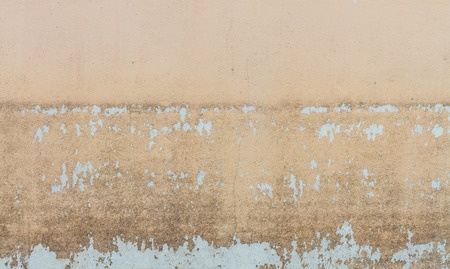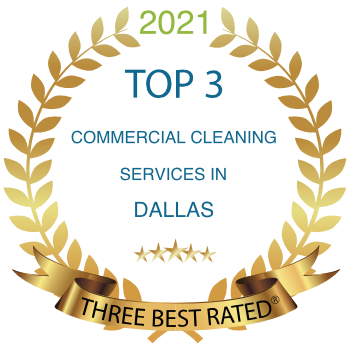Just a few weeks ago, CNN reported on the severe weather that caused flooding in Palestine, about 100 miles southeast of Dallas that killed at least six people and caused hundreds of thousands of dollars in damage to the area. Floodwaters reached the roof of some homes, creating unsafe conditions for evacuation. Meteorologists think that the combination of a storm that caused tornadoes about 80 miles east of Dallas and with thunderstorms with flash flooding across the southern parts of Texas created these severe weather conditions.
Before residents realized how bad the weather truly was, it was too late to evacuate safely. But the story isn’t over quite yet. Residents of Palestine and other areas across Texas are left with cleaning up the mess caused by heavy rains and severe flash flooding, including structural damage to property and serious water damage. In the next few weeks, businesses and homes throughout the state will work to clean up the aftereffects of the flood, and deal with chemical hazards as well as mold.
 When a property is damaged by a flood, whether it’s due to a burst pipe or an act of nature, home and business owners must be aware of the importance of proper water removal. Simply waiting until the water has drained or dissipated is not enough. Just because it looks like the water is gone doesn’t mean that there aren’t water droplets lurking beneath the floor or behind walls. By not removing water properly, you could cause irreparable damage to the structure that you might not notice for many months to come, like weakened structural beams or hidden mold growth.
When a property is damaged by a flood, whether it’s due to a burst pipe or an act of nature, home and business owners must be aware of the importance of proper water removal. Simply waiting until the water has drained or dissipated is not enough. Just because it looks like the water is gone doesn’t mean that there aren’t water droplets lurking beneath the floor or behind walls. By not removing water properly, you could cause irreparable damage to the structure that you might not notice for many months to come, like weakened structural beams or hidden mold growth.
Mold can pose serious health risks to people who spend any amount of time in the building. Environmental Cleaning Services offers comprehensive water removal and cleanup services so that you can be sure the damaged area is completely water-free before you think about repairing it.
Mold can be hard to notice, but exposure to mold can be very harmful to humans, notes the Environmental Protection Agency. For people with asthma or other respiratory problems, mold can seriously aggravate their conditions. It’s not safe for people with compromised immune systems to be around mold for extended periods of time – just one of many reasons to make sure that any water is completely removed, to prevent the likelihood of mold growth.
Once the water is completely removed by an expert, ensuring that no water still clings to floorboards or walls, you’ll need to start dealing with the effects of severe water damage. Structural issues aside, water damage to your belongings and other property can be costly to repair. Appliances, wood furniture and upholstery will need to be replaced. It’s important to start the water damage cleanup immediately, since waiting too long can cause further damage to your belongings and to the structure.
 Before you dive into the cleaning process, though, it’s important to know what kind of water damage you’re dealing with. Types of water damage are separated into categories, says Water Policy International – Category 1 covers clean water damage, which occurs when water that is not harmful to humans has caused flooding. This could happen if a bathtub overflows, for example. Category 2 water is known as gray water – this type of water damage occurs when a toilet or sump pump breaks. Gray water may be harmful to humans. Category 3 water damage refers to black water damage. Black water occurs when a sewer overflows or standing water becomes contaminated, and this unsanitary water can cause serious illness and damages.
Before you dive into the cleaning process, though, it’s important to know what kind of water damage you’re dealing with. Types of water damage are separated into categories, says Water Policy International – Category 1 covers clean water damage, which occurs when water that is not harmful to humans has caused flooding. This could happen if a bathtub overflows, for example. Category 2 water is known as gray water – this type of water damage occurs when a toilet or sump pump breaks. Gray water may be harmful to humans. Category 3 water damage refers to black water damage. Black water occurs when a sewer overflows or standing water becomes contaminated, and this unsanitary water can cause serious illness and damages.
When you’re dealing with a flood in your town or neighborhood due to weather concerns or some system malfunction, it’s important to speak to a town official to find out what kind of flood water you’re dealing with. If the water damage is classed as category 2 or 3, you’ll need to be prepared to take extra steps to deal with the cleanup.
It’s important to hire experts to deal with any type of water damage, but in the case of category 2 and 3 water damage, it is of utmost importance that a professional helps you deal with the remediation. Leaving it to chance can cause serious health issues for people around the flood site, but illnesses are easily avoided by involving the experts.
If you’re dealing with a flood in your home or business, there are some simple steps to follow that will keep you safe as you assess the damage. The first thing you need to do is turn off the power to the building. If you can do so from a dry location, then go ahead. If not, call an electrician and have them turn off the power.
If the property has been unoccupied for a few days, open windows and doors to air out the space for at least 30 minutes if possible. You should assume that if you’ve been away from the property for any amount of time that mold may have grown, so the CDC recommends that you take precautions against mold.
The next steps are to dry the property out, and deal with the residual water damage. That’s where the team at Environmental Cleaning Services comes in. We have plenty of experience with water damage, and are ready to help clean up, dry out and repair your property To learn more about our full range of water damage cleaning and restoration services, give us a call today at 214-526-6814.



